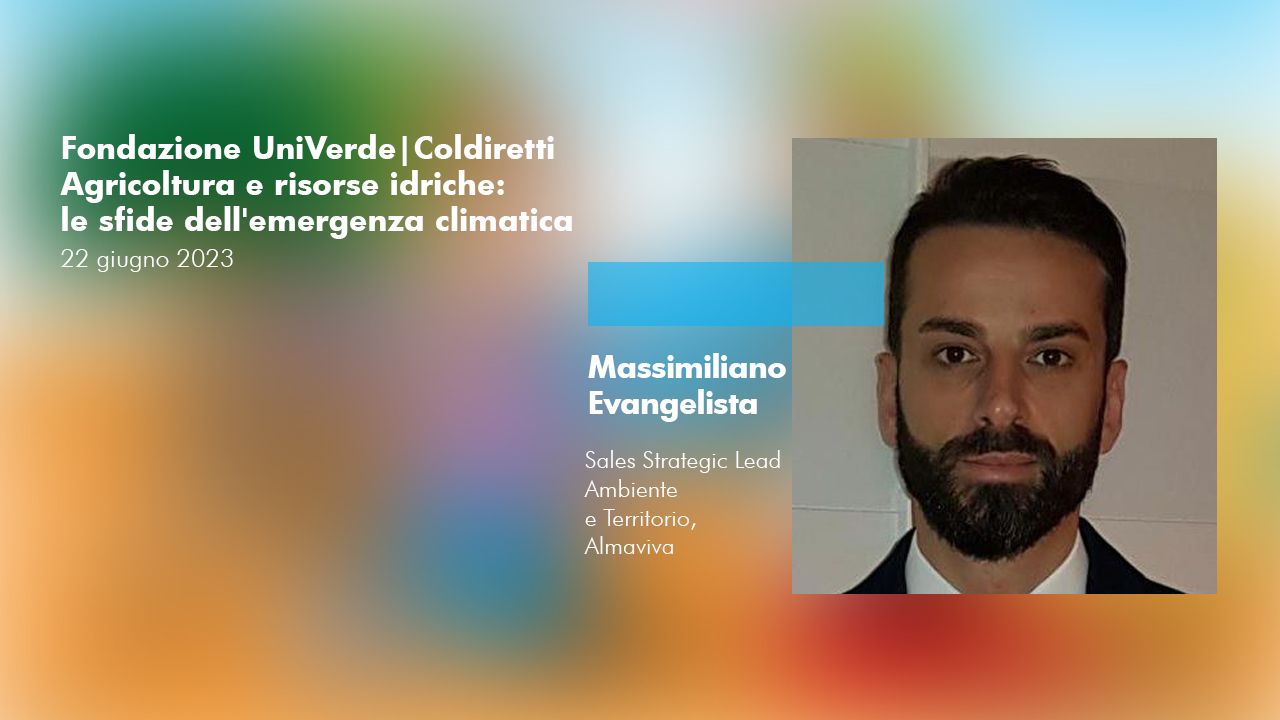Home / News / “Agriculture and Water Resource...
“Agriculture and Water Resources: the Challenges of the Climate Emergency”. On June 22nd, Almaviva takes part in the event sponsored by UniVerde Foundation and Coldiretti
“Agriculture and Water Resources: the Challenges of the Climate Emergency”. On June 22nd, Almaviva takes part in the event sponsored by UniVerde Foundation and Coldiretti

16-06-2023
By 2050, urban demand for fresh water will increase by 80 percent and with it the competition between agricultural areas and urban centers. The challenges which climate change poses are those of avoiding the waste of potable water, safely using reclaimed water in agriculture, and implementing innovative systems and infrastructures for water collection and management. The event will be streamed live on Radio Radicale, connecting from Rome’s Palazzo Rospigliosi, on June 22 and will discuss multifunctional agriculture, which is strategic to economic development and environmental conservation.
During the event, the 13th “Italians and Agriculture” Report will be presented, with a focus on “farmers' markets”, a survey that confirms Italian agriculture as the most environmentally friendly in Europe.
“Climate change is causing serious damage to our ecosystem, which has to deal with water scarcity on the one hand and extreme weather events on the other. Water and land are the primary economic infrastructures of our society and must be safeguarded,” stated Massimiliano Evangelista, Almaviva’s Sales Strategic Lead for Environment and Territory.
It’s necessary to create a digital ecosystem for monitoring water availability in order to rationalize human, animal, industrial, and especially agricultural consumption, the last of which demands 60% of the total. IoT Sensing, remote sensing, Web GIS, artificial intelligence, Big Data, analytics, and digital twins are the technological assets needed to enable virtuous water resource management, protect residents, and safeguard the country. Almaviva’s solution supports decision-making processes through the identification of areas at risk and areas to be alerted, simulations, scenario analysis and emergency management, and early warning for real-time monitoring.”


